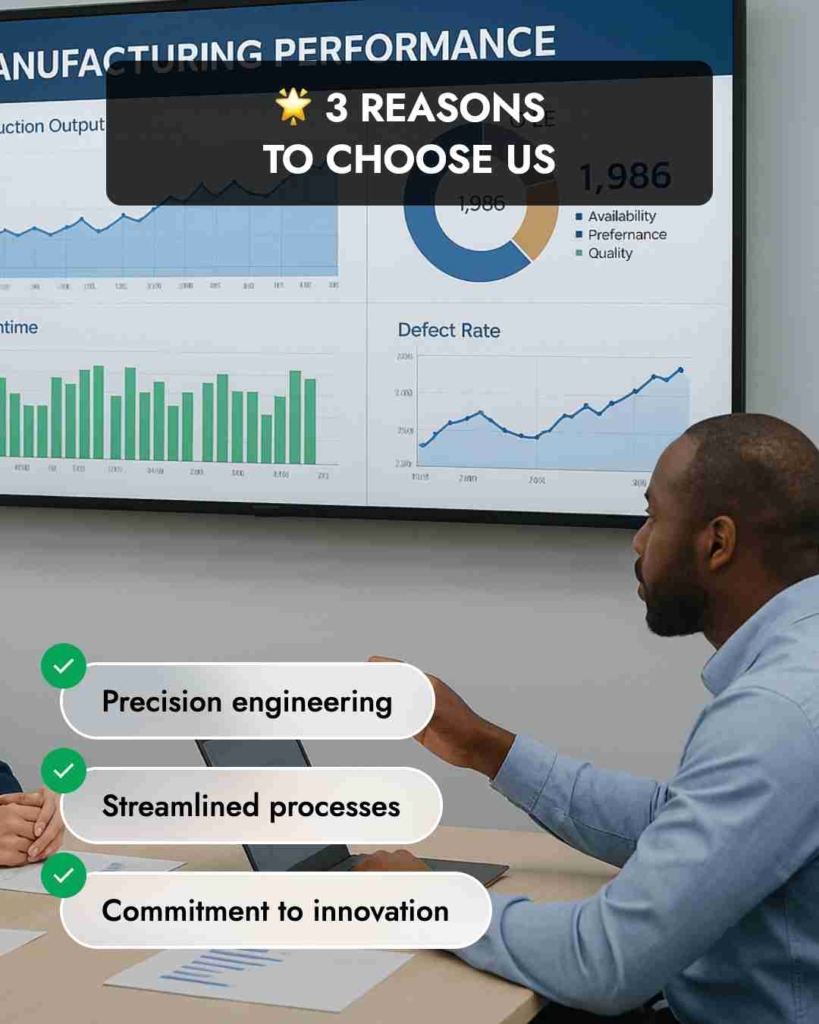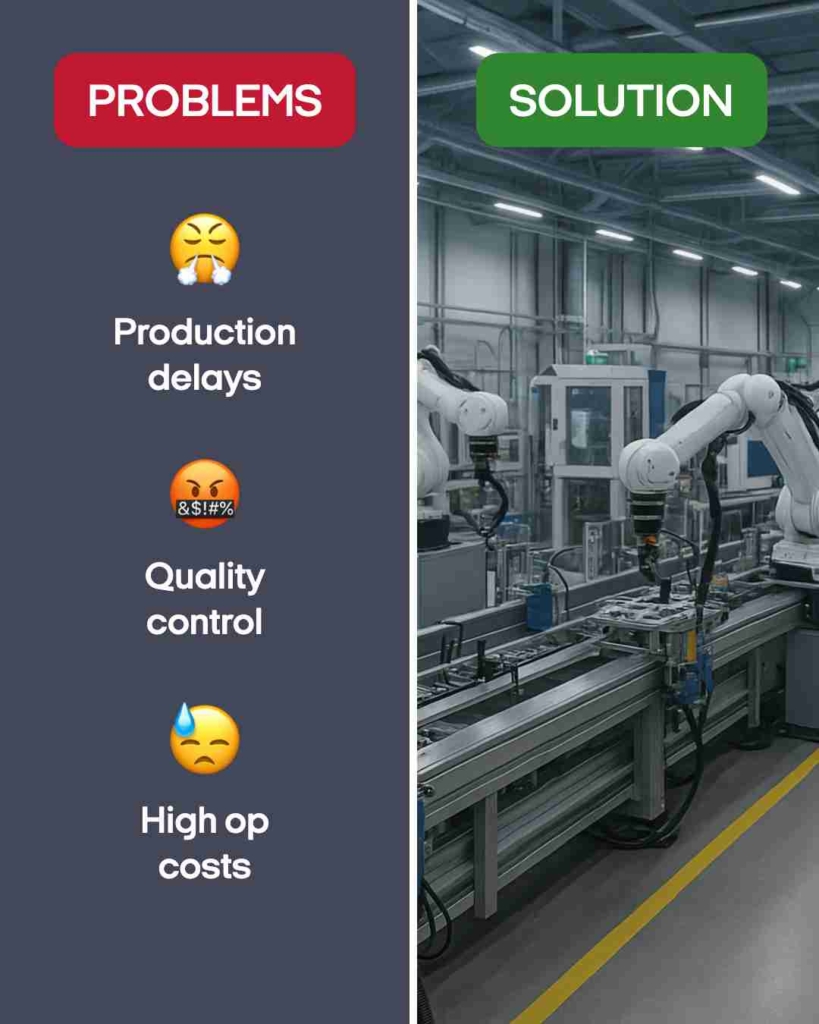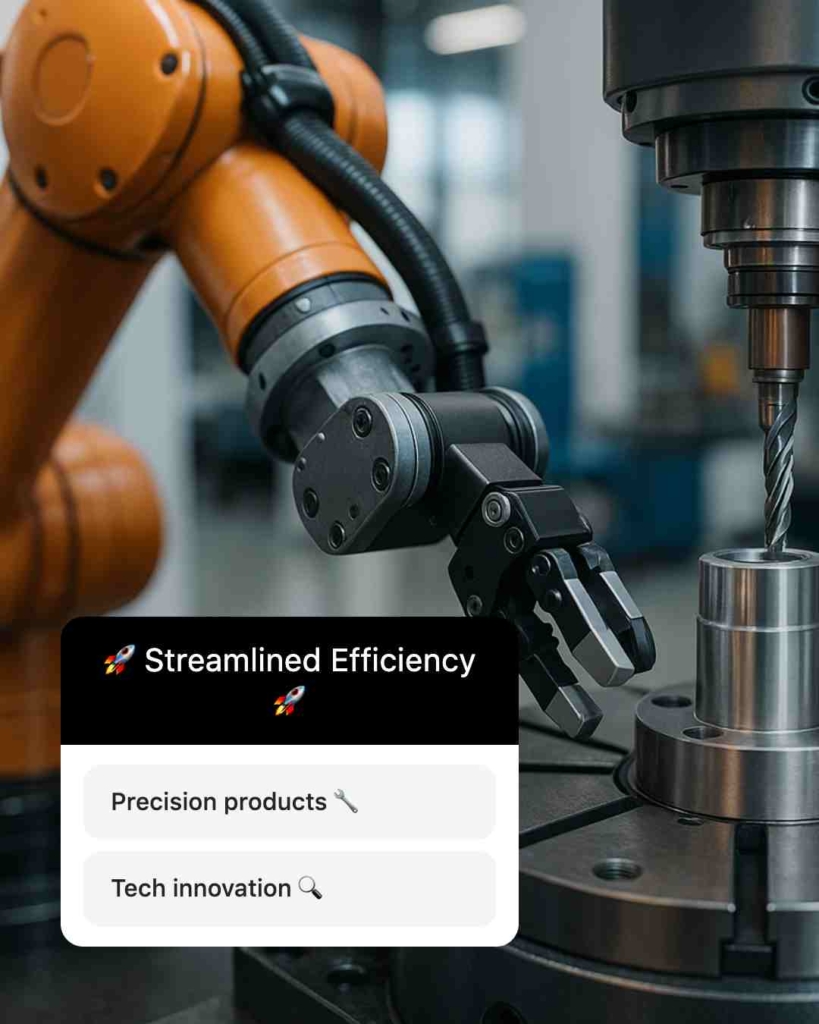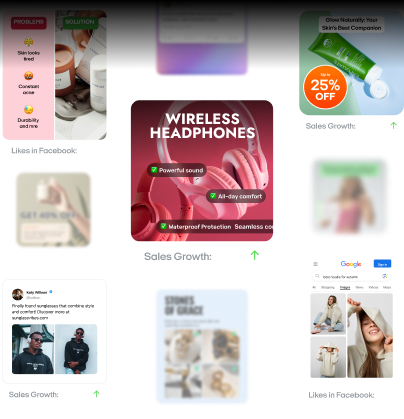Digital marketing strategy for manufacturers: A data-backed guide to use in 2025
Are manufacturers fully prepared for the upcoming shifts in digital marketing? Zeely AI reviewed the 2025 landscape to deliver the most relevant, actionable insights tailored specifically to manufacturing businesses.
Do manufacturers need digital marketing?
A digital marketing strategy for manufacturers is the roadmap that connects industrial sales complexity with online visibility. Unlike consumer brands, manufacturers deal with long sales cycles, RFQs, and buying committees that expect technical proof before they ever contact sales. That’s why engineers search Google for ISO/AS9100 suppliers, procurement teams download CAD files, and plant managers compare certifications online.
A strong strategy makes sure you show up in those moments with the right content — from spec sheets to case studies — so you earn trust and get shortlisted ahead of competitors.
According to McKinsey, 19% of B2B leaders already use gen AI in buying & selling, and 23% are building toward it. One industrial materials distributor boosted pipeline 10% and added over $1B in new opportunities in the first year of deployment.

Why does digital marketing strategy for manufacturers matter now?
The urgency lies in manufacturing marketing trends that show how fast the industrial B2B landscape is shifting. Buyers no longer wait for trade shows or cold calls; they research suppliers on LinkedIn, Google Search, and procurement portals before you even know they exist. Distributor networks are no longer the only gatekeepers.
Deloitte’s 2025 Smart Manufacturing Survey reports that 86% of manufacturers are investing in digital technologies to reduce lead times and improve visibility. If your marketing stays offline, you risk losing ground to competitors who align with these industrial B2B trends.
The stakes are high: long sales cycle marketing means lost visibility compounds over months, not days. Complex buying committees expect depth, like guides, proof points, and comparison content that show you understand their risks. That’s why this strategy guide leans into a pillar format, giving you the structured depth buyers demand.
Who are you trying to reach?
Every contract runs through a buying committee in manufacturing — engineering/design, procurement, maintenance, finance, plant management, and often EHS.
- Engineers / Design want technical proof (CAD/BIM files, tolerances, certifications)
- Procurement benchmarks cost, RFQ speed, supplier reliability
- Maintenance & EHS need safety, uptime, and compliance with standards like ISO/AS9100
- Finance cares about total cost of ownership and ROI
- Plant Managers measure delivery performance, changeover time, and operational risk
Real behavior backs this up: 79% of global B2B buyers say AI search has already changed how they research suppliers. 57% expect bigger budgets for tech/spend next year. Also, nearly 80% of buyers delay talking to vendor sales reps until after they’ve done deep research.
You’ll need to map these personas to content and proof: spec sheets for engineers, cost comparisons for procurement, safety & certifications for EHS, uptime & delivery guarantees for plant managers. Using stakeholder mapping ensures you cover all committee angles.
Mapping the industrial buying cycle
The industrial buying cycle follows clear stages where digital content supports decisions. Each stage connects to KPIs that measure progress. For deeper tactics, see Channels and Lead Architecture.
| Buying cycle stage | Digital content that works | Key KPIs to track |
| Awareness | SEO blogs, LinkedIn thought leadership, explainer videos | Non-brand clicks, CTR, time on page |
| Consideration | CAD/BIM files, spec sheets, tolerances explained | CAD downloads, spec views, assisted conversions |
| Specification | Certifications (ISO/AS9100), compliance guides, technical webinars | Number of gated downloads, qualification rate, lead velocity |
| Vendor evaluation | Case studies, ROI calculators, comparison sheets | MQL to SQL conversion, pipeline influence, cost per opportunity |
| RFQ submission | Interactive RFQ forms, CPQ configurators, response time tracking | RFQ volume, RFQ quality score, response time SLA |
| PO / Close | Factory tour videos, customer testimonials, onboarding resources | Quote win-rate, customer acquisition cost, pLTV |
According to HBR, sales teams that embrace AI tools during this journey are actually growing faster, proving that digital alignment is now a growth driver.
Goals & measurement
Tracking the right manufacturing marketing KPIs ensures you see industrial marketing ROI across the funnel. Tie each metric to velocity and attribution. For budget clarity, see Budget & Resourcing.
| Funnel stage | KPI focus | Measurement method |
| Top of funnel (Awareness) | Share-of-search, non-brand clicks, engagement (CAD/spec downloads) | Google Search Console, analytics dashboards |
| Mid-funnel (Consideration → SQL) | MQL to SQL conversion, assisted conversions, pipeline influence | CRM tracking, offline conversion import, multi-touch attribution |
| Bottom funnel (RFQ → Close) | Quote win-rate, sales velocity, average deal size | CRM opportunity data, attribution reports |
| Post-sale / Expansion | Customer acquisition cost (CAC), payback period, pLTV | Finance + CRM integration, cohort analysis |
Adobe stresses that success metrics must be linked to outcomes, not vanity clicks, with attribution models clarifying where marketing really moves revenue.
Digital marketing strategy for manufacturers
A digital marketing strategy for manufacturers is not about chasing clicks or impressions. It is a structured plan that helps you show up where industrial buyers search, prove credibility with technical evidence, and connect marketing investment directly to RFQs and revenue.
Manufacturing is different from consumer markets: sales cycles are long, buying committees are complex, and trust is built on compliance and proof, not slogans. To succeed, your strategy must rest on four building blocks: guiding principles, governance with RACI, an industrial ABM strategy, and manufacturing competitive analysis grounded in share-of-search.
Core principles of a digital marketing strategy for manufacturers
Every plan should begin with principles that keep your team focused on outcomes. In industrial B2B marketing, the priorities are visibility, proof, and measurement.
- Visibility: Engineers and procurement managers often start research months before an RFQ. If you are absent in Google Search, LinkedIn, or procurement portals, you are cut before the shortlist. Tactics like technical SEO, schema markup for part numbers, and optimized Thomasnet profiles are baseline
- Proof: Buyers require CAD/BIM files, spec sheets, ISO/AS9100 certifications, and case studies to verify capabilities. Factory tour videos, QA lab footage, and destructive testing demos extend credibility. These assets are marketing and compliance evidence at once
- Measurement: Metrics must tie to business outcomes. For manufacturers, the KPIs are RFQ submissions, quote win-rates, and pipeline influence. Tracking requires CRM integration, offline conversion import, and assisted conversion reporting
Example: A mid-sized plastics supplier optimized its website for “ISO-certified molding supplier,” published a CAD library, and tracked RFQs in Salesforce. The outcome was higher engineer engagement and measurable increases in qualified leads.
Tools that help: Ahrefs and SEMrush for SEO visibility, WordPress with schema plugins for technical metadata, Salesforce or HubSpot for CRM and pipeline tracking.
Expected results: Manufacturers applying these principles consistently see 2–3x more CAD downloads, faster movement from MQL to SQL, and stronger RFQ volume.
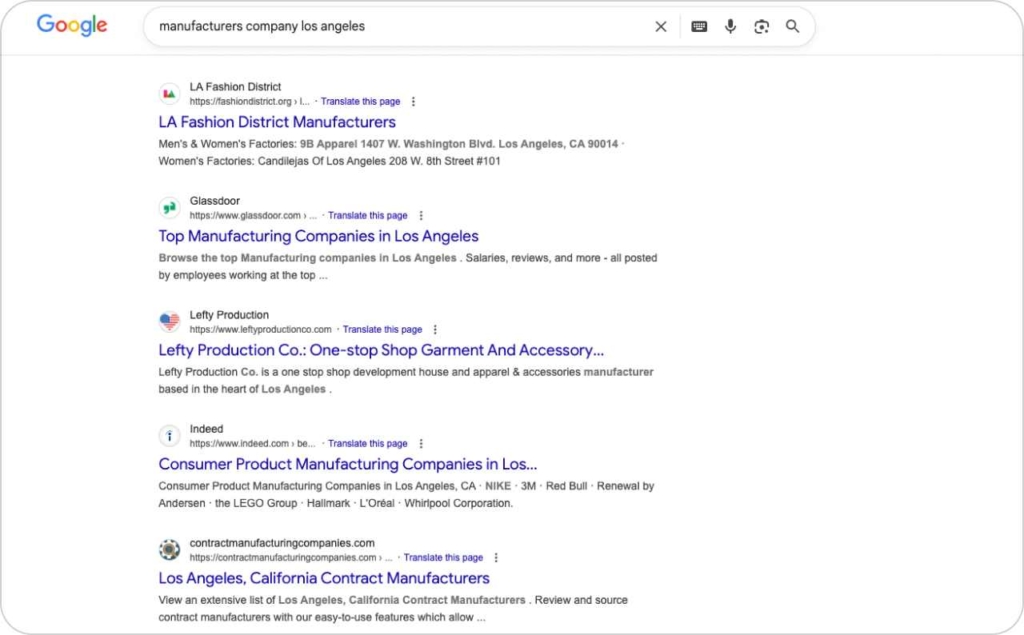
Governance with RACI: Defining roles and accountability
Without structure, even the best digital marketing strategy for manufacturers will stall. A RACI framework ensures clarity across marketing, sales, and technical experts.
- Responsible: Marketing teams run SEO, content creation, campaign orchestration, and analytics
- Accountable: Sales is accountable for RFQ follow-up, quote management, and CRM pipeline accuracy
- Consulted: SMEs — engineers, EHS managers, quality specialists — validate technical content, author proof-driven blogs, and provide data for compliance guides
- Informed: Finance and leadership track CAC payback, ROI, and share-of-search reports to evaluate progress
Example: Instead of asking engineers to “write blogs,” a manufacturer interviews SMEs for 30 minutes, drafts content in marketing, and routes it back for quick validation. This approach keeps credibility high while respecting limited engineering bandwidth.
Tools that help:
- Project management: Asana, Monday.com for RACI task ownership
- Collaboration: Confluence or Notion for SME content reviews
- CRM: Salesforce, HubSpot, or Microsoft Dynamics for linking leads to closed-won opportunities
Expected results: With governance in place, content delivery accelerates by 20–30%, errors decline, SMEs feel included without being overworked, and leadership gains visibility into ROI.

Photo source: Enercon Technologies
Industrial ABM strategy: Tiered account focus
In manufacturing, most revenue comes from a limited number of high-value customers. An industrial ABM strategy aligns marketing spend with account value through tiered targeting.
- Tier 1 accounts: Strategic OEMs or global buyers. Deliver custom microsites, personalized case studies, and curated spec libraries. Use Demandbase or 6sense to personalize campaigns across channels
- Tier 2 accounts: Mid-value accounts segmented by verticals (aerospace, automotive, construction). Share compliance checklists, ROI calculators, and sector-specific webinars. Tools like RollWorks scale vertical campaigns
- Tier 3 accounts: Long-tail opportunities. Deploy LinkedIn retargeting, Google Ads, and automated nurture workflows. CRM-linked ad platforms tie exposure to pipeline metrics.
Example: An aerospace components supplier grouped top five accounts into Tier 1 and built microsites focused on AS9100 compliance. Procurement managers spent longer on site, and RFQ submissions from those accounts increased within six months.
Tools that help: LinkedIn Campaign Manager for targeting engineers and procurement officers, RollWorks and Demandbase for ABM orchestration, and HubSpot workflows for nurturing Tier 3 audiences.
Expected results: Tier 1 programs typically deliver 20–25% higher RFQ conversion rates. Tier 2 accounts progress faster from MQL to SQL. Tier 3 retargeting reduces CAC by keeping the brand visible during 12–18 month buying cycles.
Manufacturing competitive analysis and share-of-search
The final element is manufacturing competitive analysis, focused on share-of-search — how often buyers see your brand compared to competitors. In industrial markets, visibility gaps translate directly into lost RFQs.
- Search visibility: Use Ahrefs, SEMrush, and Google Search Console to compare keyword rankings for spec-driven terms and industry certifications
- Procurement portals: Benchmark Thomasnet and GlobalSpec profiles against competitors. Monitor traffic, reviews, and profile completeness
- Technical assets: Audit whether rivals publish CAD libraries, spec sheets, or case studies you lack. Buyers gravitate to suppliers that provide immediate technical access
- Thought leadership: Track LinkedIn post engagement among engineers, procurement, and plant managers. Competitors leading in Industry 4.0 discussions gain authority early in the cycle
Example: A fastener manufacturer discovered 70% of inbound RFQs originated from keywords where it ranked in the top three. Competitors with CAD libraries captured higher engagement. Closing these gaps lifted both share-of-search and pipeline contribution.
Tools that help: Ahrefs and SEMrush for keyword benchmarking, Thomasnet analytics for procurement portal performance, LinkedIn Campaign Insights for engagement tracking.
Expected results: Manufacturers who track and close competitive gaps often double engagement on technical assets, improve organic visibility, and grow inbound RFQs from non-brand search.
Channels that work in digital marketing strategy for manufacturers
A digital marketing strategy for manufacturers succeeds when channels are activated in a hub-and-spoke model. Your website and content serve as the hub, while SEO, paid ads, social, video, and trade shows act as spokes. Industrial buyers move across all of them — an engineer might start on Google, a procurement officer may check Thomasnet, and a plant manager could validate suppliers through LinkedIn or a trade show meeting. To stay competitive, manufacturers must ensure each channel delivers visibility, proof, and measurable ROI.
Owned: Website, content, engineering libraries
Your website is your most valuable channel. It should operate as a digital plant tour where engineers, procurement, and managers can find what they need without delay.
- Offer CAD/BIM downloads in STEP/IGES formats with revision history, searchable by part number
- Provide spec sheets and certifications in a library format that procurement can trust
- Add E-E-A-T signals like SME-authored content, case studies, and visible ISO/AS9100 documentation
When libraries are structured around spec-driven navigation, engineers can test compatibility during design stages. That leads to more CAD downloads and earlier inclusion in shortlists.
Findability: SEO, directories, marketplaces
Industrial buyers nearly always begin in search engines or procurement portals. A manufacturing SEO strategy ensures your content can be discovered.
- Use schema markup for products so search engines understand ASTM/ISO standards in your spec sheets
- Enable faceted navigation so users can filter by tolerance, size, or certification
- Apply canonical tags to avoid duplicate pages across CAD versions
- Keep page speed high, even with large file libraries
- Maintain up-to-date profiles on Thomasnet and GlobalSpec with technical documentation and case studies
This makes your company easier to find at the exact stage buyers research suppliers — long before RFQs are issued.
Paid: Search, LinkedIn, retargeting, ABM
Paid channels accelerate reach and can tie directly to KPIs when structured correctly.
- Search ads capture active demand for terms like “ISO-certified CNC supplier”
- LinkedIn ads for manufacturers target engineers, procurement managers, and plant leaders by title and industry
- Retargeting campaigns keep your brand visible during 12-18 month sales cycles
- ABM campaigns use matched audiences to deliver proof content only to Tier 1 accounts
Manufacturers can also apply tools like Zeely’s AI ad generator to create multiple ad variations quickly, aligned with tone and compliance standards. This reduces creative bottlenecks and makes it possible to run ABM plays at scale with measurable outcomes like MQL→SQL conversion.
Social & video: Proof at scale
Social and video channels build trust by showing processes buyers cannot see firsthand. Engineers and procurement teams want evidence of capability, safety, and compliance.
- Factory tour videos demonstrate production scale
- Destructive testing and QA lab clips show quality standards
- Certification walkthroughs reduce buyer risk
Embedding videos on your site, optimizing them for YouTube SEO, and distributing them on LinkedIn extends reach. Using schema markup (VideoObject) improves visibility in search results.
Manufacturers can speed content creation with Zeely AI’s video generation, turning product URLs into proof-driven clips for campaigns without requiring film crews.
Additional strategies manufacturers should not overlook
Beyond core channels like SEO, paid ads, and trade shows, manufacturers also benefit from lighter tactics that competitors often use to stay top of mind:
- Email marketing: nurture engineers and procurement teams with compliance updates, spec sheet releases, or factory news
- Geotargeting and geofencing: reach local buyers near facilities or trade events with mobile ads
- Partnership and influencer programs: collaborate with industry associations, trade publications, or technical creators on LinkedIn and YouTube
- Remarketing via newsletters: repurpose case studies or CAD updates into digestible content that drives return visits
These lighter strategies round out your digital marketing strategy for manufacturers and expand visibility in places where competitors are already active.
How to get started with your digital marketing strategy for manufacturers using Zeely AI ad generator
Advertising for constructors and manufacturers often stalls on the same issues: campaigns take too long, cost too much, or fail to convert. The Zeely AI creative ad generator is an AI-powered ad tool built for SMBs, marketers, and e-commerce teams that need speed and simplicity. It works like a business growth app — turning product pages into ready-to-run ad creatives without the usual bottlenecks.
Step 1. Choose your input
Pick a product URL, CAD library, or spec sheet. Zeely scrapes images and key details automatically. No product page? Enter information manually.
Step 2. Select your format
Create static ads for compliance proof or short videos for factory tours, QA testing, or process capability content.
Step 3. Customize your creative
Add hooks, CTAs, and subtitles. Adjust tone and highlight proof points like ISO/AS9100 certifications or delivery guarantees.
Step 4. Launch your campaign
Export ads directly into Meta, LinkedIn, or Google campaigns. Zeely auto-optimizes creative rotation and targeting.
Step 5. Measure results
Connect Zeely to your CRM. Track RFQ starts, MQL→SQL conversion, and quote win-rate so every campaign ties back to revenue.
Common pain points solved by Zeely
- No time to create ads → The AI generator for ads reduces production from hours or days to minutes
- Low budget ads → Zeely cuts video costs by up to 20×, making professional campaigns affordable
- No design skills → The AI ad tool builds creatives automatically with proven templates, hooks, and CTAs
- Campaign complexity → Zeely auto-optimizes formats for Meta, LinkedIn, and search, removing technical barriers
- Low conversion rates → Templates tested on $1B+ ad spend are built to lift CTRs and drive RFQ submissions
- Scaling problems → Batch and bulk modes let you generate many variations at once for ABM tiers or retargeting
- Wasted ad spend → CRM integrations connect ads to pipeline metrics, so you know which creatives generate quotes and wins
Why choose Zeely
The Zeely AI ad generator removes barriers that block industrial and SMB growth. It delivers cost-efficient ads, requires no design background, and scales easily across campaigns. As a business growth app, Zeely helps manufacturers and marketers alike simplify advertising, control spend, and focus on results.
Read more marketing ideas and strategies















Also recommended




